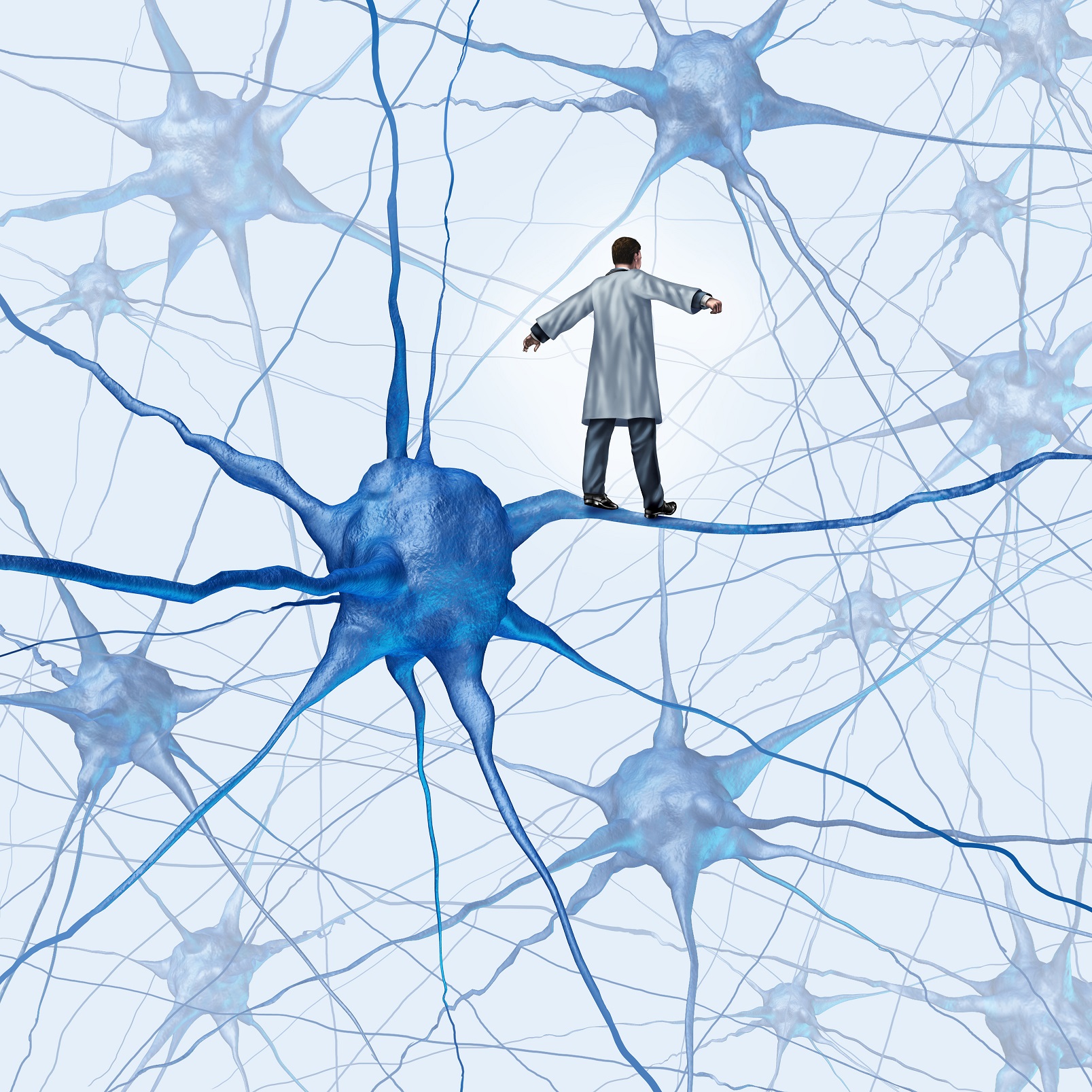
What is an “attractor state?” Neuronal
networks (i.e. pyramidal cells in the primary visual cortex) receiving
dendritic input from peripheral sources (i.e. the retina) and transmitting to
other neural networks (i.e. the visual associational cortex) through axonal
connections are called attractor networks. Neuron subpopulations pertaining to
the same attractor network feed back to their own dendritic connections through
excitatory collaterals, a phenomenon known as positive feedback looping, whilst
concurrently deploying inhibitory interneurons to suppress activities in
neighbouring neural networks, a complementary phenomenon known as negative
feedback looping, respectively. N-methyl-D-aspartic acid (NMDA) and
gamma-aminobutyric acid (GABA) receptors mediate this dyadic
excitatory-inhibitory function, allowing the neurons within an attractor
network to persist firing at high frequencies long after the application of an
external stimulus has been terminated. Under such circumstances dendritic input
may select neuron subpopulations into stimulus-specific “preferential states”
otherwise known as “attractor states.”
Some physicists and neuroscientists now
believe that stimulus-specific “attractor states” encrypt foreground sensory
information like visual, auditory, olfactory, gustatory experiences along with
background perceptual information like particular thoughts, explicit memories,
emotions, and rule-based decision making into “quale”, the subjective,
qualitative aspects of consciousness which cannot be generalized to the entire
human species nor communicated to any adequate and gratifying level by the
interpersonal operative mode of semantic language and the intersubjective
agency of scientific jargon.
Attractor networks are inextricably
linked with two specific conditions–an active or persistent state and a passive
or resting state. In the first, novel dendritic input inaugurates
high-frequency neuronal firing within an attractor network, whereas in the
second the absence of input leads to a stable, resting state characterized by
spontaneous neural depolarizations and low-frequency, random-spiking activity.
When attractor networks switch to passive or resting phases, it may be inferred
that they are roaming their specific state spaces. In The
Developing Mind, Daniel Siegel proclaims that “attractor states”
experienced by individuals as stable, self-organizing patterns with cognitive,
affective, and behavioural elements initiate top-down firing of particular
neural networks which self-perpetuate their own creation. Neurons which fire
together, survive together, and wire together, creating an engrained
configuration of mind states, a bundle of psychobiological impulses bound
together by banal habit. From this perspective attractor network models and
“attractor states” may explain why our mental lives continue to constrict in
terms of functionality and creativity, at times tantamount with broken records
and unconscious automata. Autobiographical histories are peppered with
innumerable examples.
Owing to the curious phenomenon of
human stupidity, our infamous tendency to sink into the gelatinating masses of
ignorance and unconsciousness, most “attractor states” are maladaptive,
self-defeating, and detrimental to wellbeing. In 2009 I suffered the greatest
humiliation, the unprecedented, non-consensual termination of a five-year
relationship initially founded on the empathic qualities of love, trust,
safety, and mutuality. The emotional turmoil and excruciating pain attached to
it initiated a benthic storm of linguistic rehearsals pertaining to what I
might say and how I might react should I be ill-fated as to chance upon this
individual out in public. The imagined repercussions evolved to encompass
everything from a planned reunion full of pleasant surprises to genuine embraces
and brief moments, and from a random roadside shoulder rub pervaded with cold
stares to undignified exchanges peppered with snide remarks and diabolical
combat. Even after the original stimulus had ceased, repeated inner
recapitulations of these mental rehearsals cleaved, associated, synchronized
and reinforced a specific configuration of neural processes in my brain,
augmenting the likelihood of their activation in the near future. It just so
happens that there has been some rigid adherence to these engrained states, and
I routinely find myself tossing through the aforementioned possibilities with
little to no regard for how I’m actively contributing to the rigid
establishment of primitive ego defences which in turn subvert constructive
transformation and change.
The probability that an “attractor
state” will be activated is contingent on both autobiographical history and
environmental circumstances. For as long as I can remember, genuine
introversion, reticence, and shyness have pervaded my psychological
constitution. While this never hindered my interpersonal and social functioning
to any detrimental level, it posed problems in the area of professional oratory
and public speaking. This phenomenon has its origin in my formative high school
years and has subsisted until the present moment. Each time I am due to address an eclectic
group of people on specialized research topics, I find myself capitulating to cumulative
stress and apprehension. Cognitive-affective epiphenomena of sympathetic system
activation include reduced focal attention, forgetting important points and
major arguments, overlooking cues and mnemonics, and resorting to excessive dictation
from related academic and anecdotal texts. What triggers these maladaptive
emotional responses is a confluence of reinforced preferential states for fear
and flight coupled with a reduced degree of sensitivity to environmental
contingencies. Despite professional and psychospiritual evolution, the idea
that each proposition for a speaking engagement may be a sun-washed opportunity
for inner growth and transformation, the negative emotional appraisals
associated with being a public figure are so deeply engrained in state-specific
conditions that they automatically sabotage the possibility of constructive
novelty and variability. “Attractor states” are like snowballs rolling down a
precipitous slope–the more frequent the activation, the direr the consequences.
Another example of an “attractor state”
is my notable obsession with the mythology and history of ancient Egypt. After
“remembering” my formative fantasy plays incorporating ancient Egyptian themes
and paraphernalia in my twenties, I embarked upon an archetypal odyssey of
self-discovery through a holistic, all-encompassing, and animistic lens
intrinsic to ancient Egyptian myths and cosmology. This intellectual phase
involved reading every academic text I could possibly get my hands on and was
punctuated with genuine suadades for
customs, rituals, and traditions that mirrored my spiritual bent. My principal
areas of interest were the eighteenth dynasty which included the transitory
rule of the renowned boy-king Tutankhamun; the mortuary temples and
temple-complexes consecrated to the cosmic goddesses Hathor an Isis; the
primordial state myths involving Osiris, Isis, Horus, and Seth; and the
Ptolemaic Period. Ten years later this accrued body of knowledge was observed
and interpreted from an esoteric and transpersonal perspective, lending
credence to the scientific conviction that states of mind infused with variant
degrees of emotional intensity configure and reconfigure across time.









